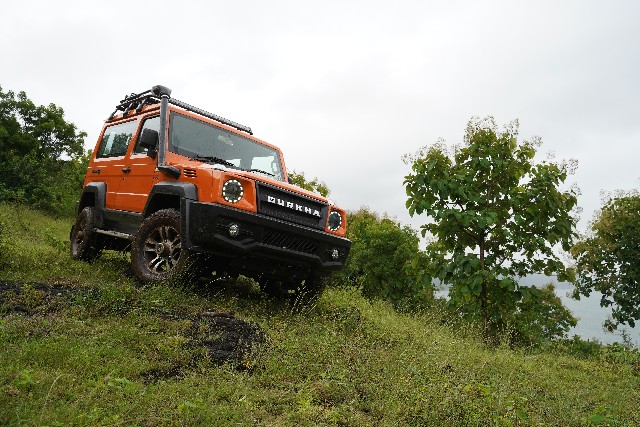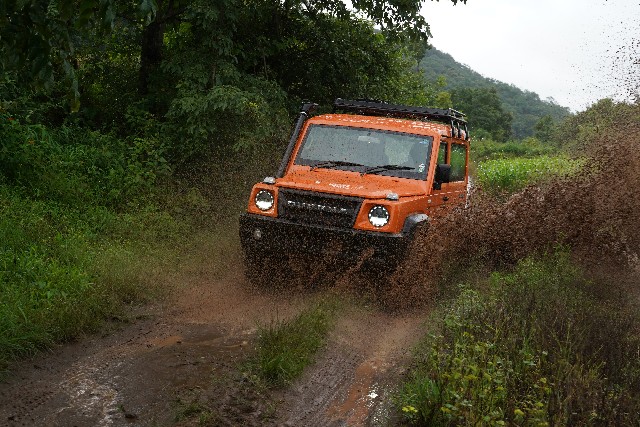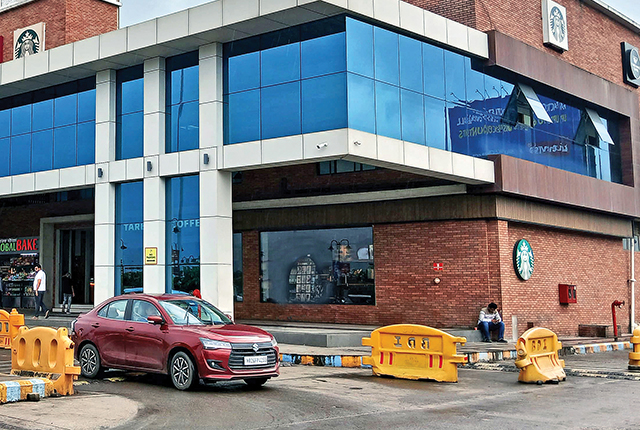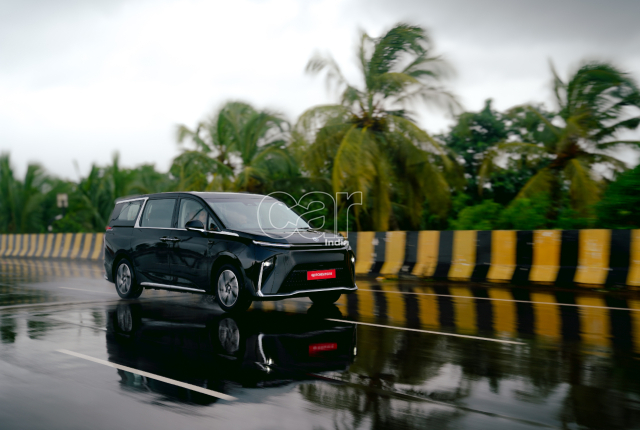Going off-road in the new Force Gurkha makes you believe in superpowers as this 4×4 simply annihilates mud, sand, slush and any kind of trail you throw at it.

Story: Sarmad Kadiri
Photography: Apurva Ambep
And now, thanks to a new chassis, suspension, overall refinement and an improved cabin with better creature comfort the Gurkha has also become a more accomplished everyday car. Since the new Mahindra Thar has opened the floodgates as a huge number of mainstream buyers are considering a 4×4 to be their primary vehicle, Force Motors are looking at cushioning in on this opportunity with the polished new Gurkha. For the new model Force Motors are polishing the soft skills of the dealer sales teams further, so that they can understand the needs of the new clientele. Meanwhile, hardcore fans will be kept engaged through the owners club and with challenging off-road events. We were among the hand-picked journalists who got to drive this three-door version. Though a more conventional five-door version is on the cards as well.
Force Gurkha: Exterior Design
The boxy Mercedes-Benz G-wagen inspired styling looks intimidating and in these funky new colours, it would complete blend in to a rap song video. The Gurkha is no longer a utilitarian off-roader but a stylish car, and even a single panel is brand new. The corners are softer, the body lines are tighter, and the overall build has improved. It’s evident with the well-executed clamshell bonnet, old-school round LED headlamps with trendy jewel-like DRLs, and the new grille which now boasts the Gurkha lettering in bold. I like the fact that the indicators are still position high, next to the bonnet, the bumper has been given a modern treatment, and there’s a proper bash-plate to take the beating.
Look at the new Gurkha from the side it spells hardcore off-roading. It retains the snorkel which promises an incredible 700 mm water wading capability, while the overhangs ensure best-in-class gradability of 35-degree. There’s a generous spattering of plastic cladding around the wheel arches and an integrated footboard which comes useful every time you climb in or out of this tall machine. The biggest change in profile is the large, single panel rear glass which replaces the convention windows. The challenge here is that the rear windows are now fixed and can’t be opened. Hopefully, Force Motors will offer the option of sliding windows in the future. At the back, there’s a new bumper, a tailgate-mounted spare tyre, and the tail lamps have been positioned higher than before for better visibility. Adding to the overall appeal, our test car came with accessories like a roof rack with a jerry can, a rear ladder and more importantly all-terrain tyres.
Force Gurkha: Safety and Platform
Overall the Gurkha is also larger than its predecessor and has far better structural rigidity thanks to it new ladder on frame chassis. In fact, the new steering column is also collapsible to reduce occupant injury in case of a crash. Since the company wants to export the 4×4 model to an international markets, it has ensured that the new model meets the necessary crash test norms. During the presentation Force Motors said that the structure rigidity has been achieved in collaboration with the IDIADA team, Spain. To improve the ride, both on and off the road, the engineers have retuned the independent, double-wishbone front suspension and the rear multi-link setup with Panhard rod, and there’s anti-roll bar in front and back. Moreover, there are coil springs at all four wheels now. This has really improved the overall refinement and reduced the body movement to a great degree.
Force Gurkha: Interior and Cabin
Using the stepping board and A-pillar mounted grab handle to swing yourself in and are greeted by a modern cabin layout. The simple plastic parts can’t match new-age cars but the ergonomics and creature comfort are leaps and bound ahead of the older Gurkha. There’s plenty of cubby holes including a slot to stow mobile phones, I like the rotary a-c vents and large and comfy seats. The door gets some nice fabric trim and a slim pocket to store maps and paper. The driving position is pretty decent too, thanks to the tilt and telescopic adjustment for the steering wheel and you get an excellent front and side view. The view from the inside rearview mirror is somewhat restricted due to the two high-set, front-facing Captain seats at the back. The basic driver console is easily legible and the air-con dials and controls are well within reach. Also, the window area makes sure that the all-black cabin doesn’t feel claustrophobic at all. Just that the front power window buttons are unconventionally positioned on the extreme left end of the centre console.
Force Gurkha: Features
Adding a modern touch are things like speed sensing door locks, dual airbags and an after-market type tyre pressure monitoring system. The modest Kenwood seven-inch touchscreen gets Android Auto and Apple CarPlay but the buttons are tiny and the UI isn’t as slick. This large 4×4 also gets parking rear sensors but misses a rear camera. While the basic key does get the find-my-car feature that makes the Gurkha’s hazard lights blink. The front doors don’t open in stages as they are held by faux leather straps from within. If old-school charms you then the Gurkha won’t disappoint.
Force Gurkha: Rear Captain Seats
This three-door version is a four-seater, and passengers have to use the side-ways opening tailgate to access the front-facing rear seats. You get a footstep to help you get in and seems more convenient than squeezing yourself in from the front door. The rear Captain seats are well-padded and can even accommodate well-built people with ease. You can adjust the armrest and recline the seats for even more comfort, and there’s more than adequate head and shoulder room. The large Tata Sierra-type glasshouse gives the cabin an airy feel. There aren’t any dedicated a-c vents now can you open the rear window, but thankfully the air-con works well and also gets an additional ‘Max’ mode to keep everyone cool. Right at the back, there’s a large 500-litre luggage area, though the loading dock is on the higher side. Compared to the doors the bonnet is much heavier and well insulated and manages to keep the diesel clatter under control.
Force Gurkha: Engine and Performance
Under the hood is the Mercedes-Benz-sourced 2.6-litre diesel which has been powering the Gurkha for years. Yes, the engine has become BS6 compliant but it’s much more refined than before. The cabin is also quieter and the tyre noise is lower than the older model, though still not on par with new-age crossover SUVs. The old horse has been tweaked to make slightly more power and torque and now churns out 91 hp and 250 Nm. There’s ample low-end grunt as the turbo spools up right from 1,300 rpm and there’s steady thrust before it maxes out close to 3,200 rpm. It feels the best when the engine is kept boiling around 2,500 rpm. Thankfully most of the torque is also available in the lower revs, which comes in handy while crawling without throttle input. This also means you don’t have to work the gears as much. The gearbox isn’t the slickest in the business and the clutch is lighter than before though it still has a long travel. Power delivery is relaxed and it can cruise effortlessly at 80 km/h in fifth gear, but it’s never in a hurry to go fast.
Force Gurkha: Steering and Handling
The steering has plenty of play, so it’s not really meant for darting through fast bends. Instead, this tall 4×4 has been tuned to manoeuvre easily through ruts, rocks and puddles, though twirling it does require some effort. What also helps here is a tight 5.65-metre turning radius, which makes three-point turns quite effortless. What it can do tremendously well is take on bad roads, gradients and broken paths. The low-speed ride cushions everything, without being overly soft. This well-damped suspension is further complimented by the all-terrain tyres helping the Gurkha bulldoze through the trickiest of road surfaces.
Force Gurkha: Off-roading
The independent suspension gobbles up potholes and speed bumps like treats, without you having to slow down. Simply engage the 4WD gear lever in to Four-High mode and the Gurkha marches ahead conquering bumps and trenches of the broken roads without flinching. The good ground clearance, approach and departure angle make it practically invincible. Though while coming down a steep gradient the rear stepping board did manage to plough the field once.
For a more serious affair, all we had to do was maintain the momentum and slot the lever in four-low and the Gurkha did the rest. It crawled up seemingly impossible slushy paths of a steep hill (while it was still raining) without any throttle input. And when you bite more than you can chew, just engage the mechanically-locking differentials and it rescues you from the sticky situation. This in-house developed transfer case has been put to the extreme tests during Rainforest Challenge events.
Conclusion
The Gurkha doesn’t need to establish its off-roading abilities. But with the newfound appeal and sophistication, the 2021 model feels like a completely different animal. It’s not for the faint-hearted but now has the potential of being an everyday car for our growing breed of adventure seekers. For many like me, the trendy new colours and the G-wagen-ish swag will be enough to seal the deal.
Also Read: Mahindra Thar Review






















Leave a Reply